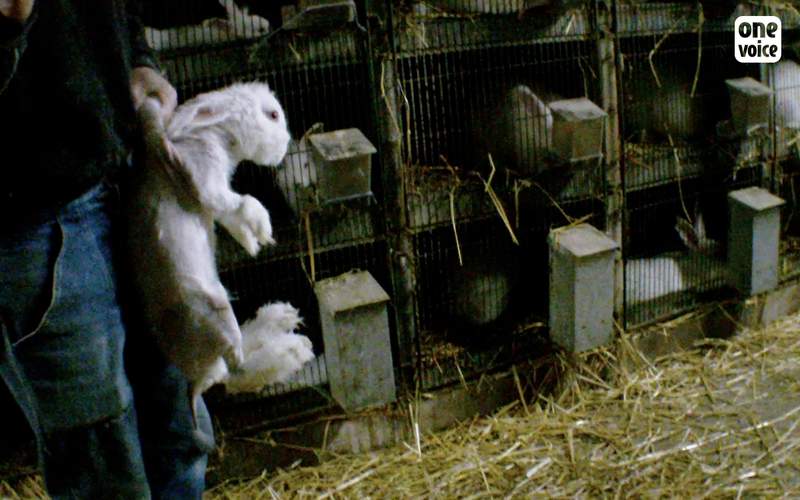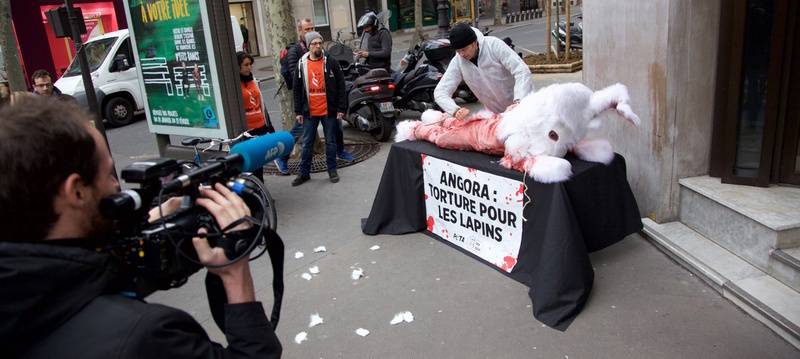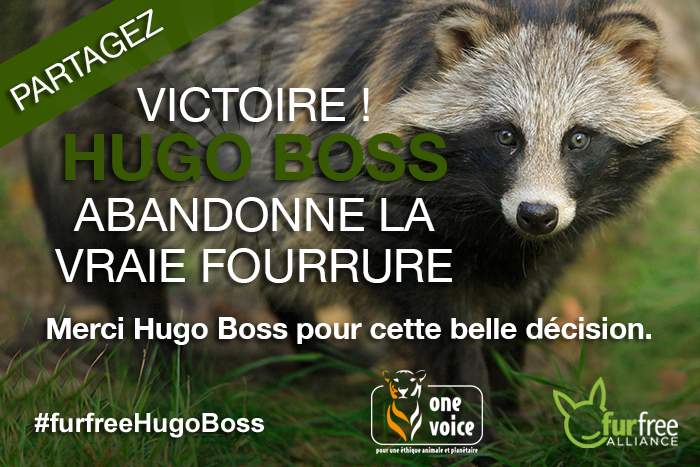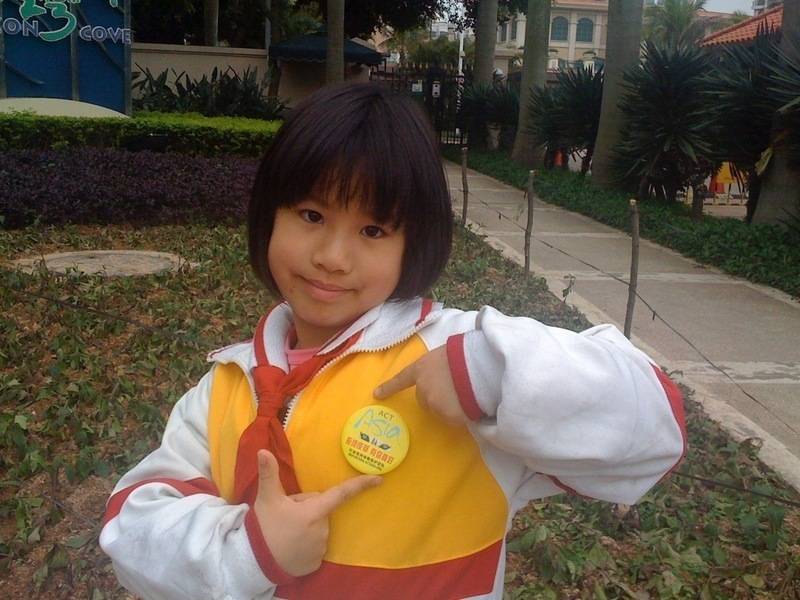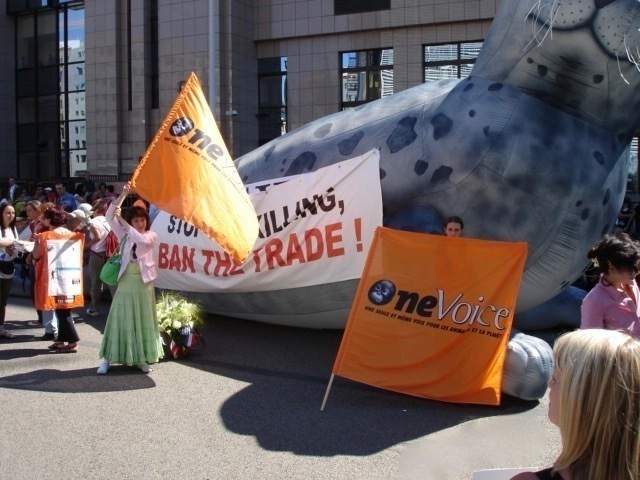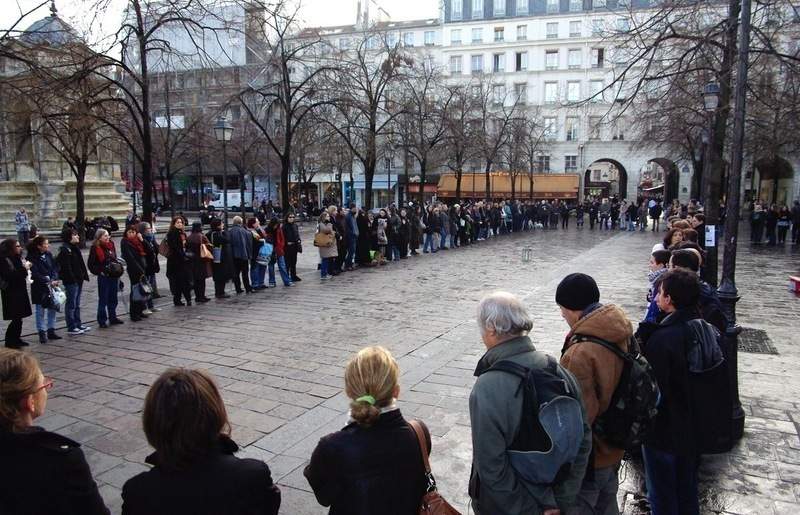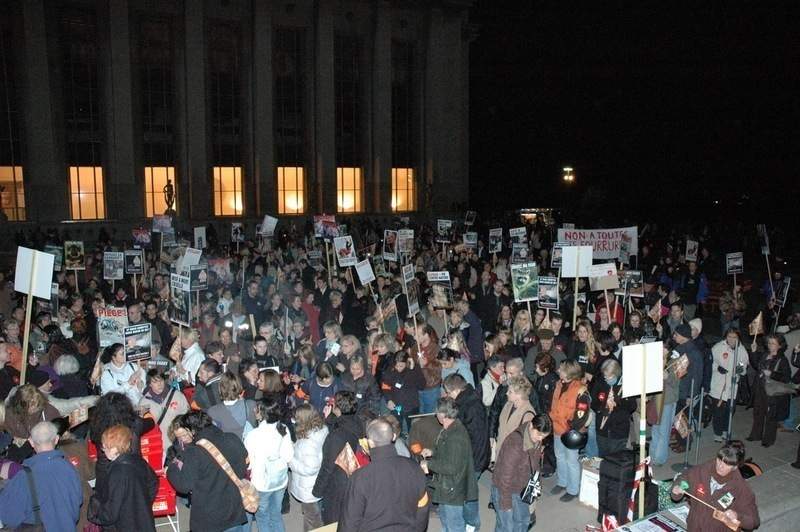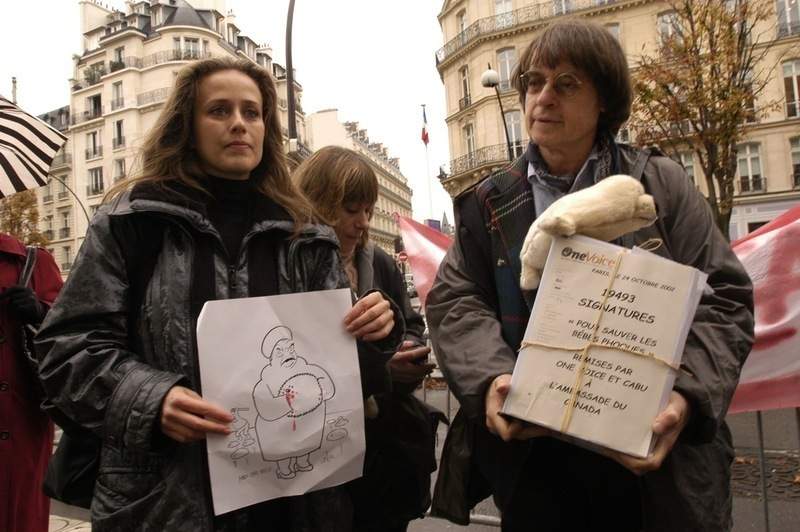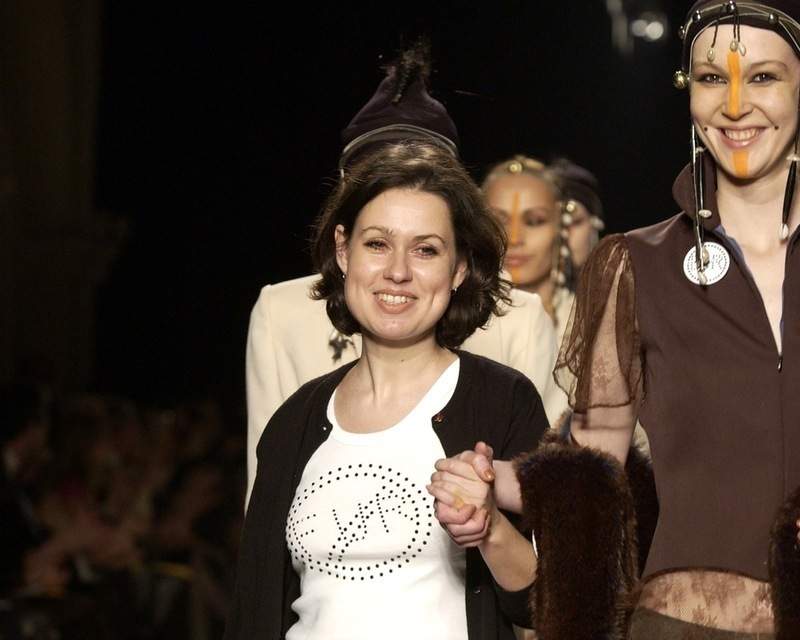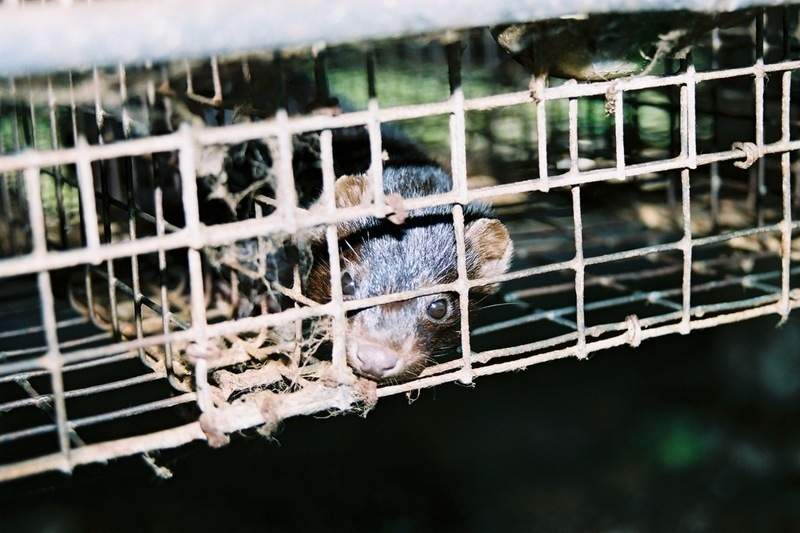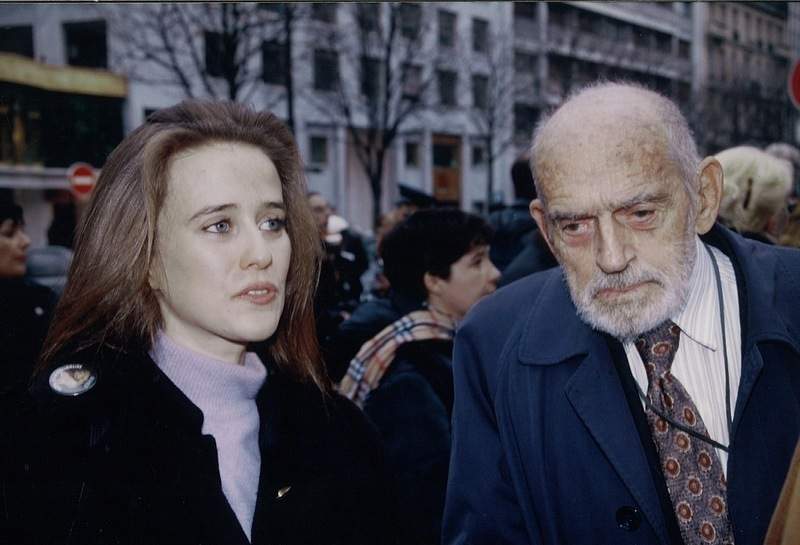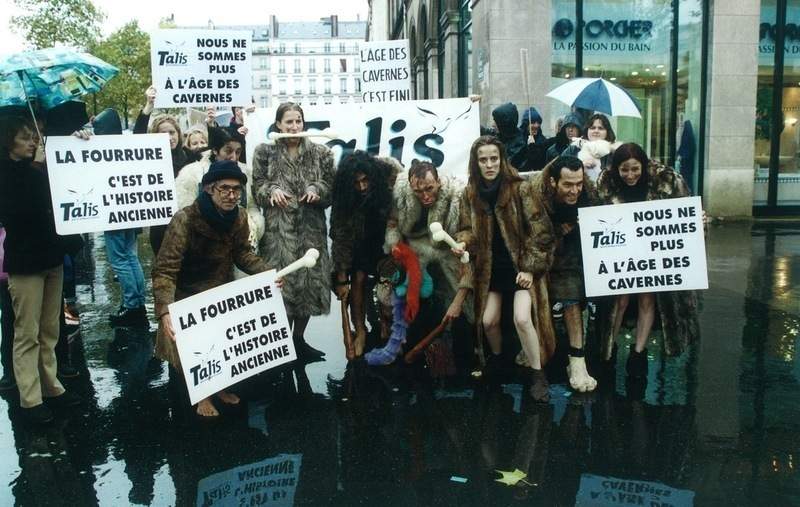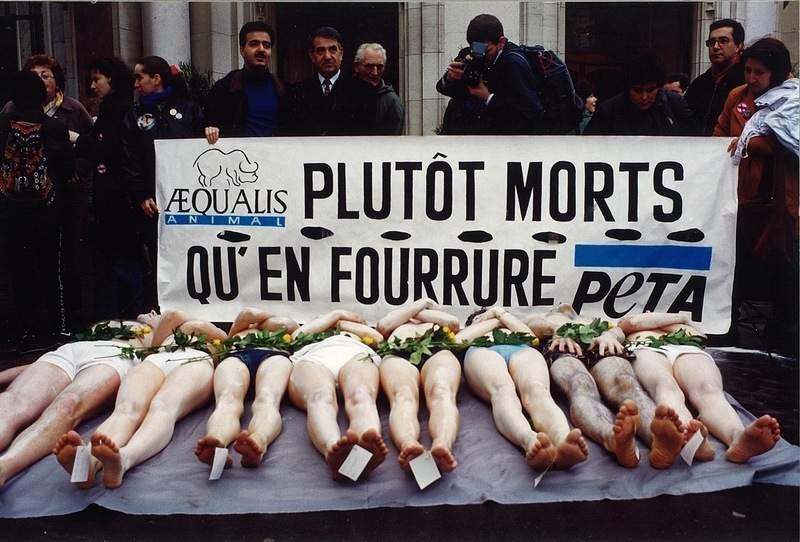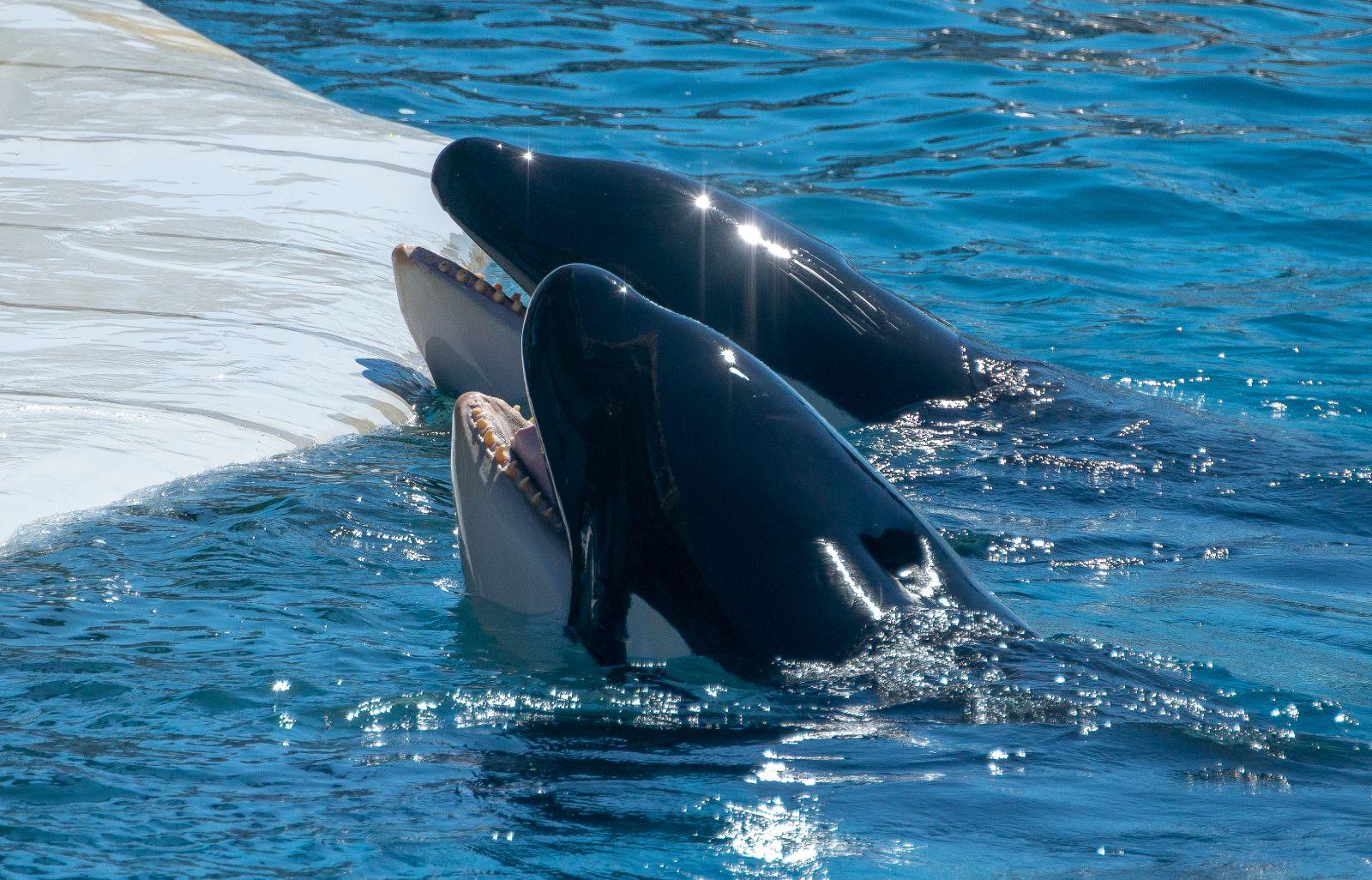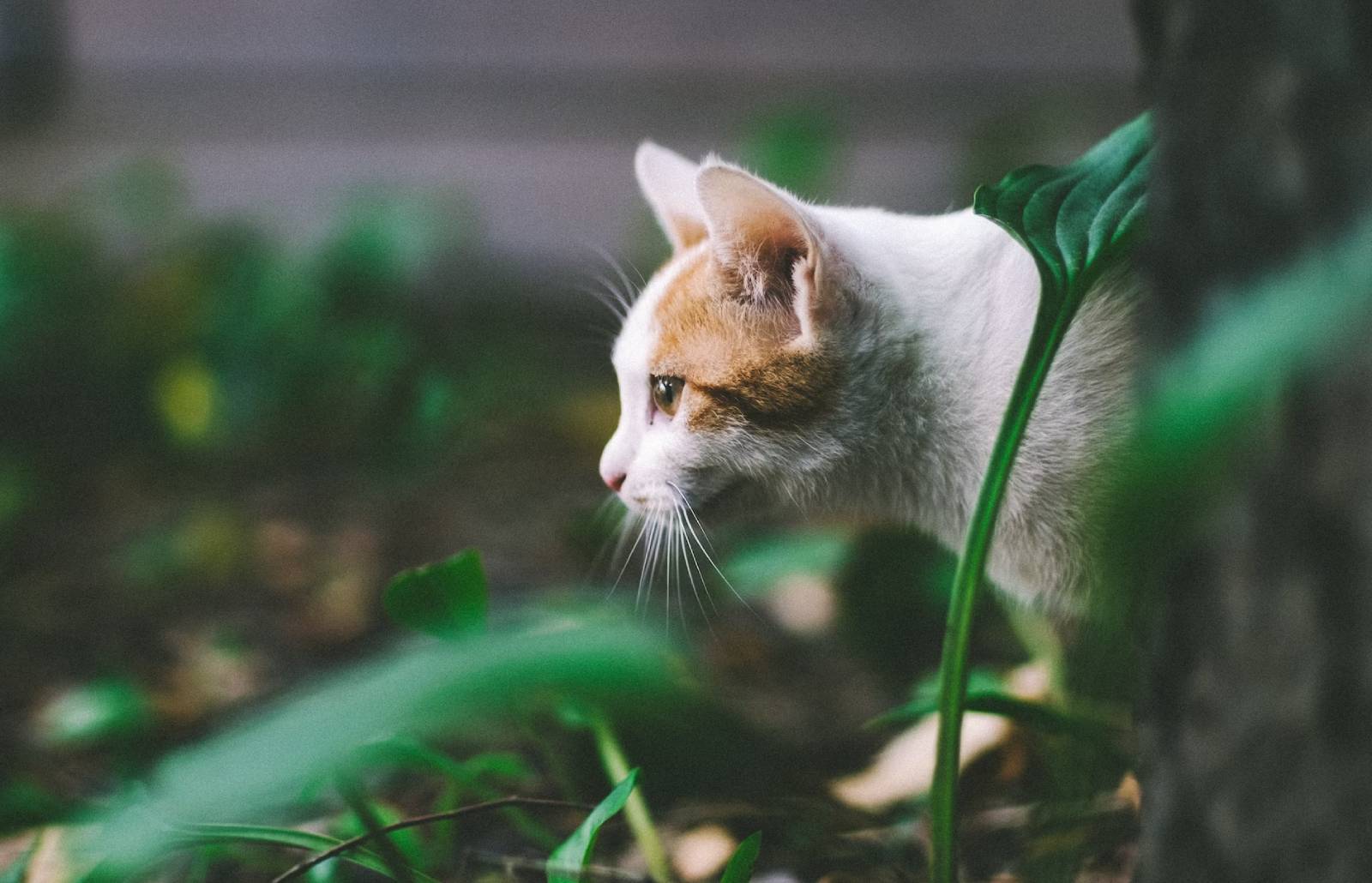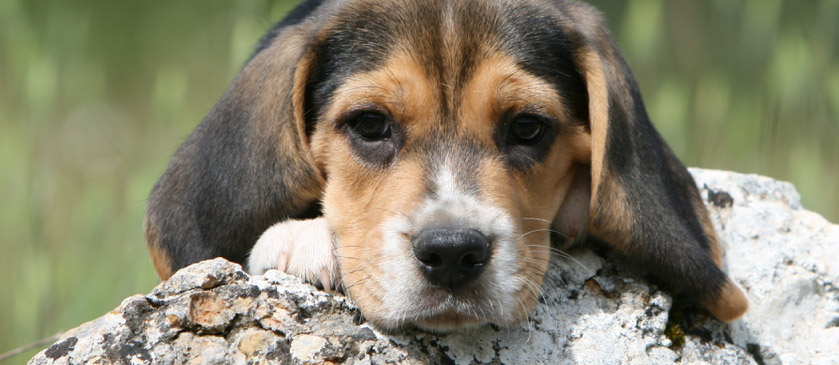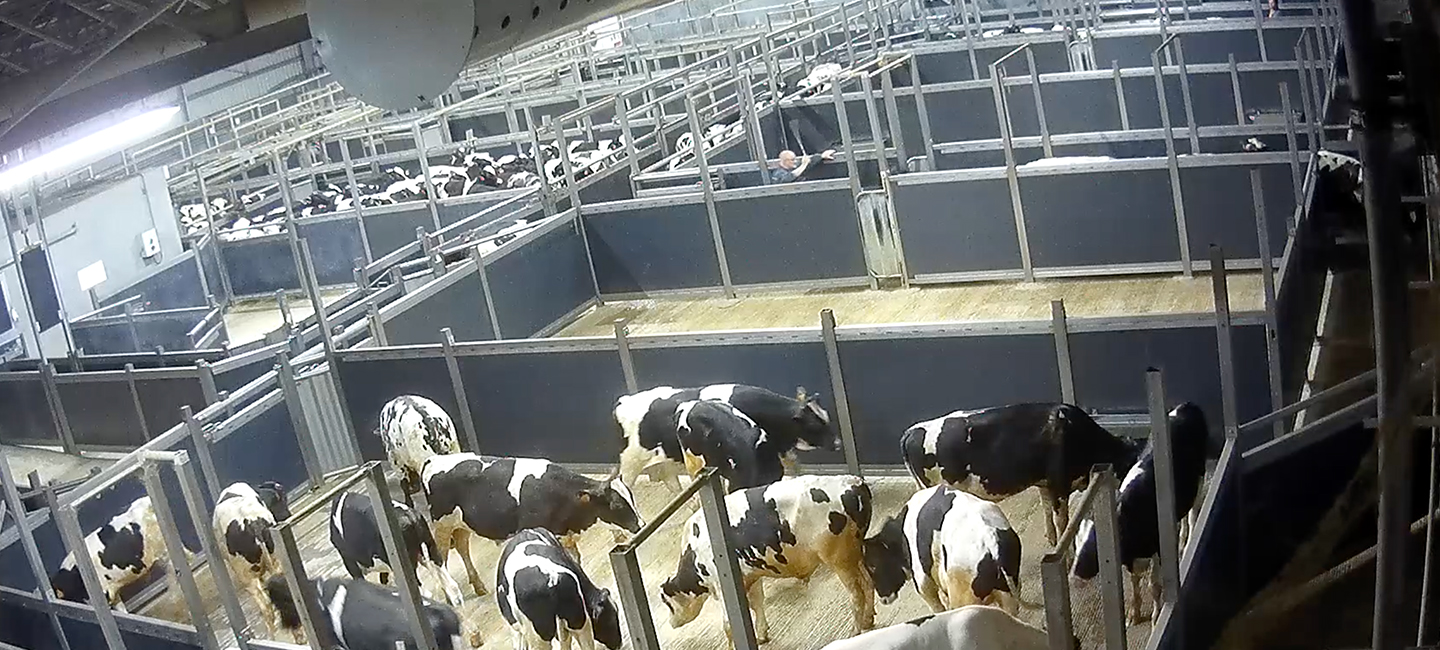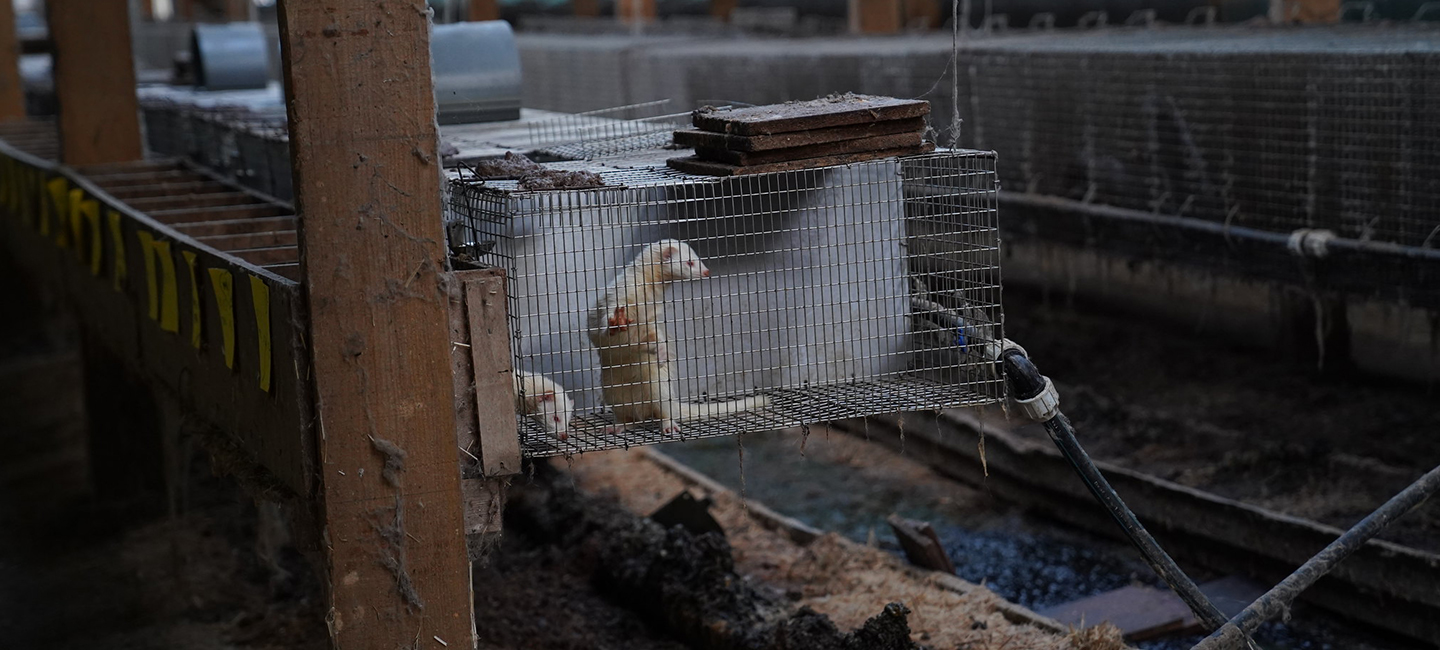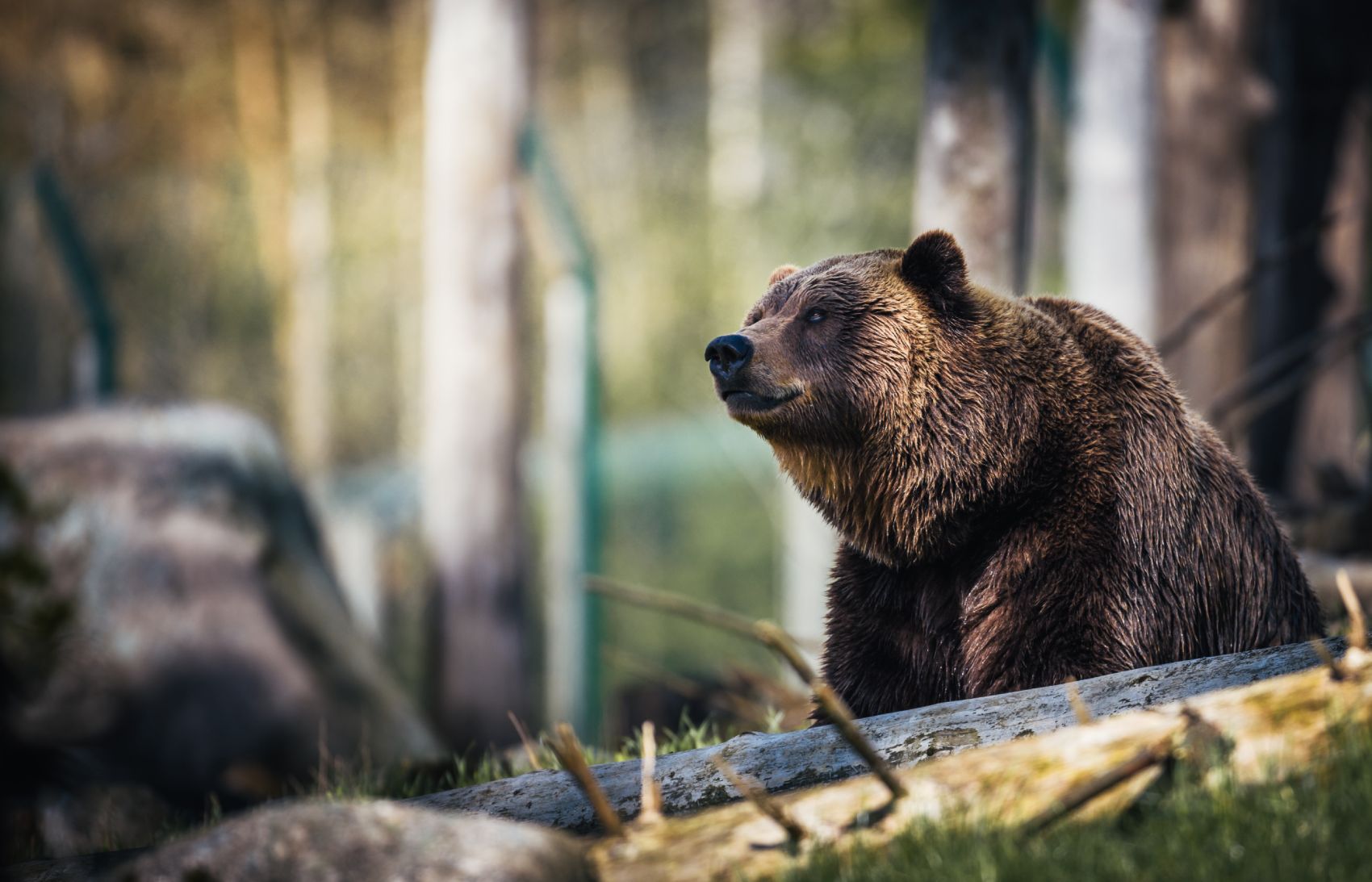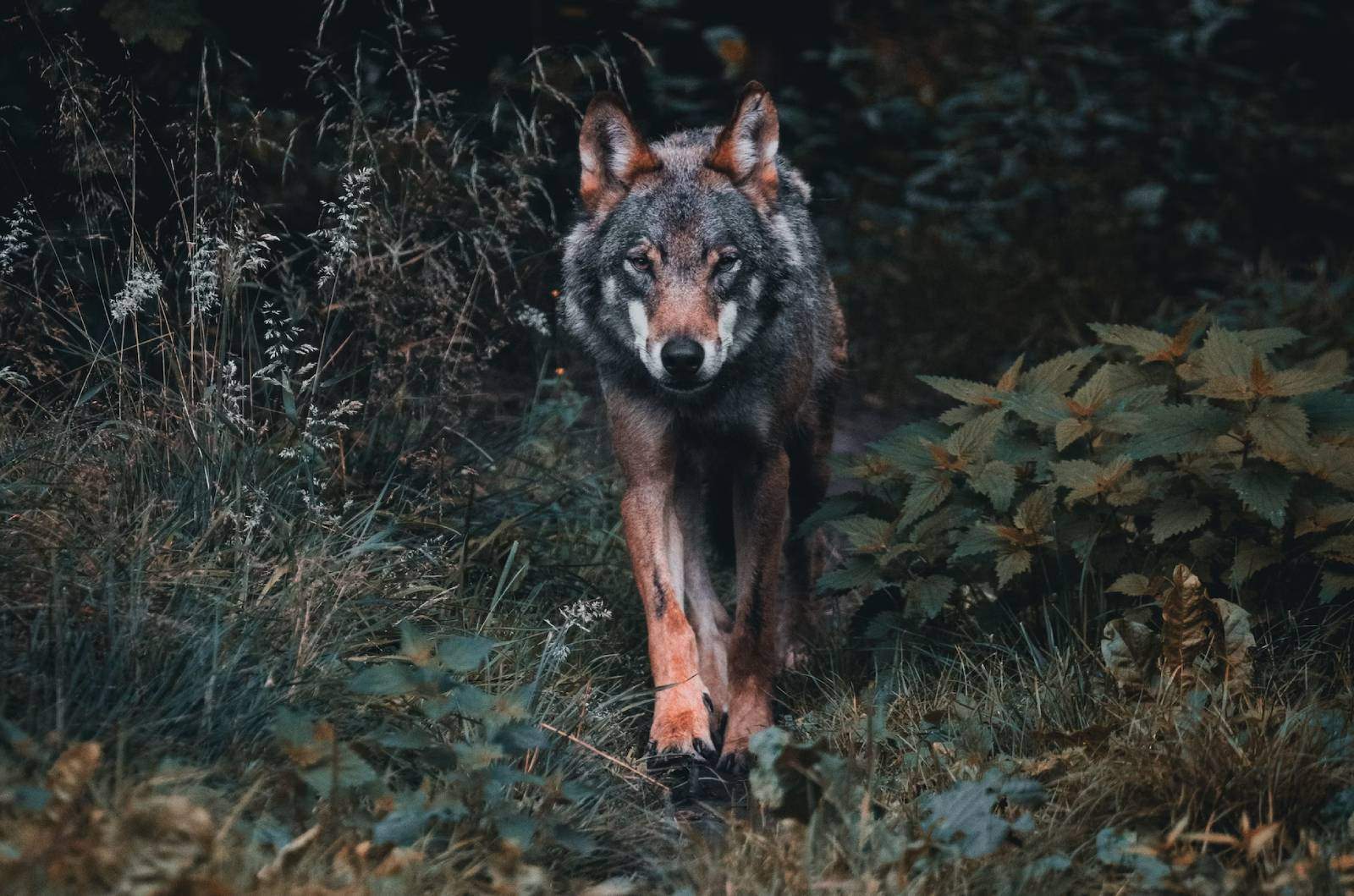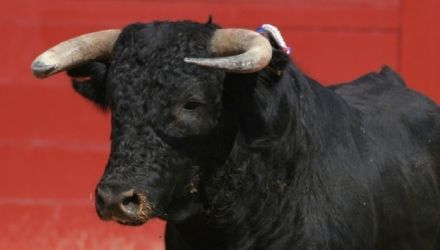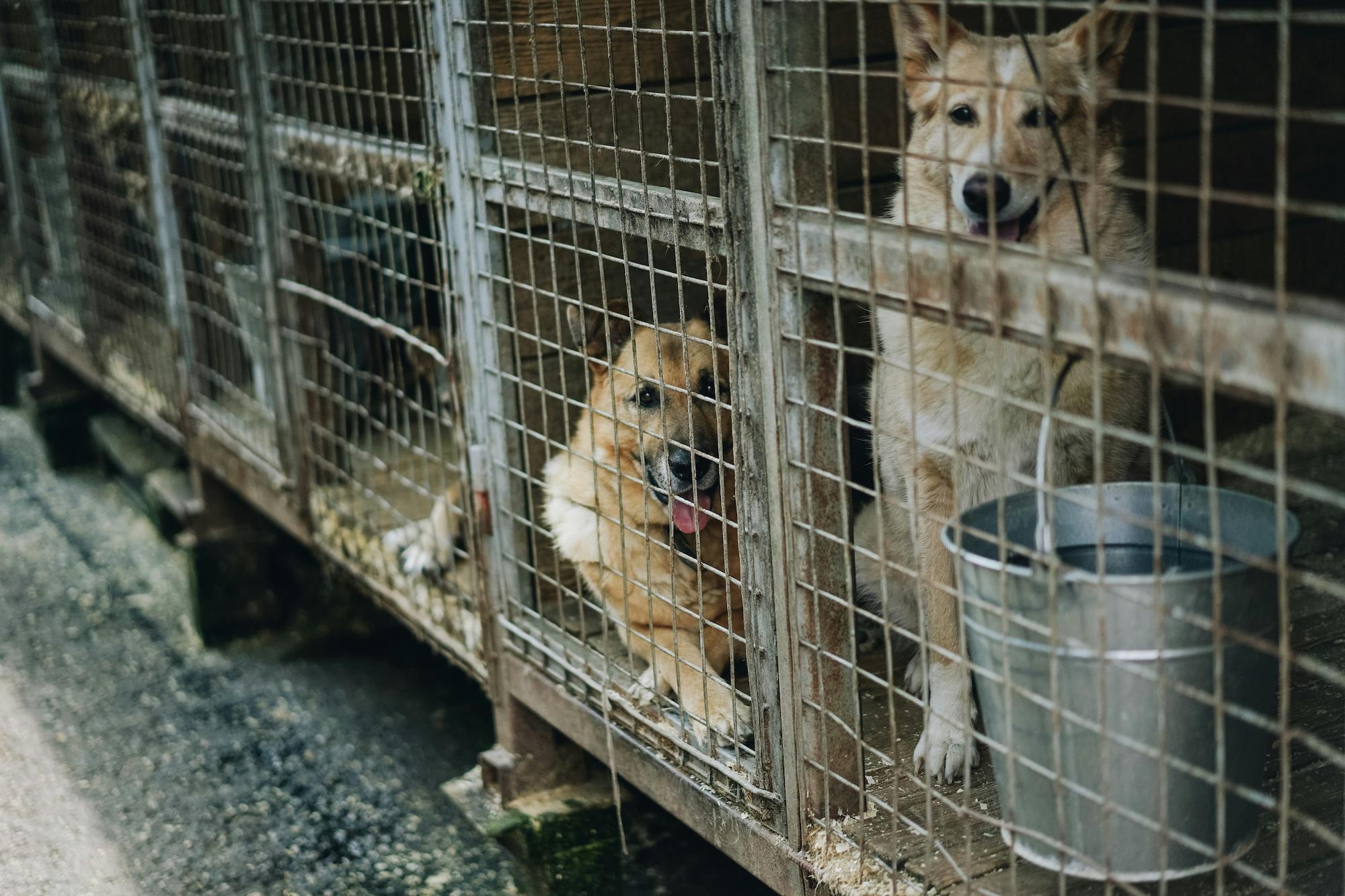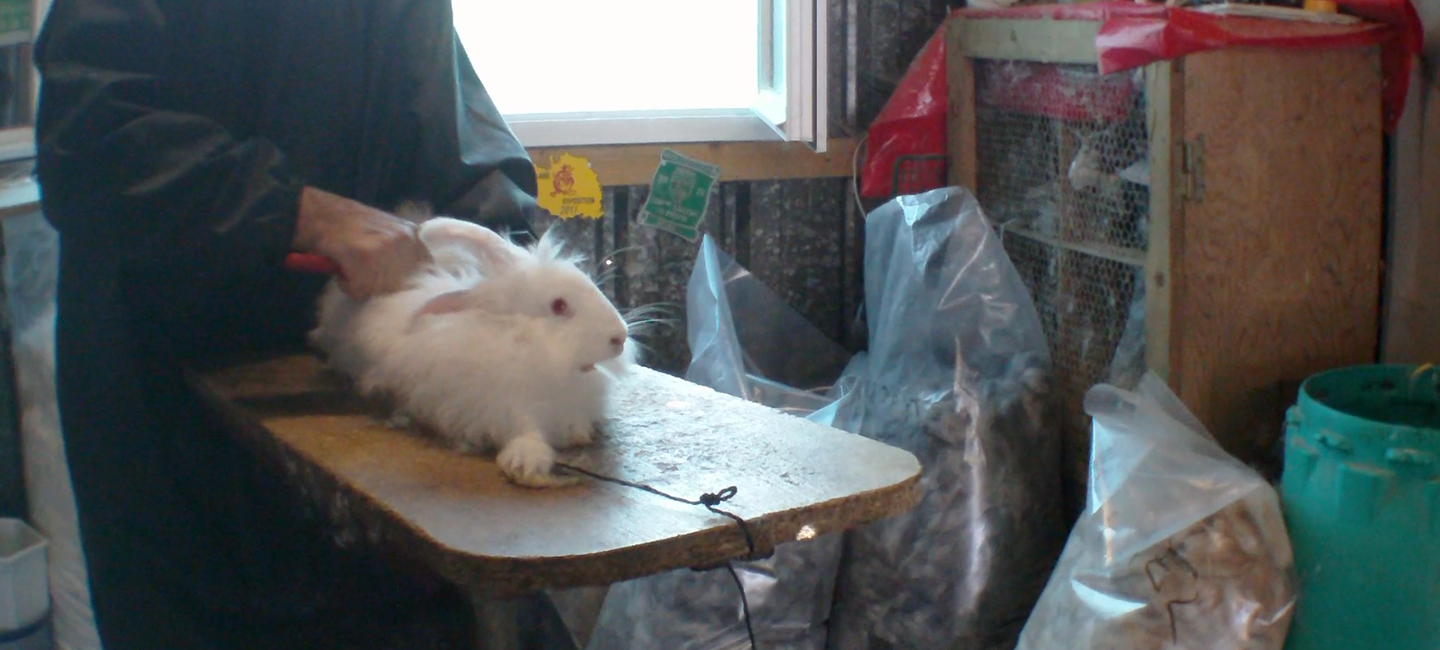
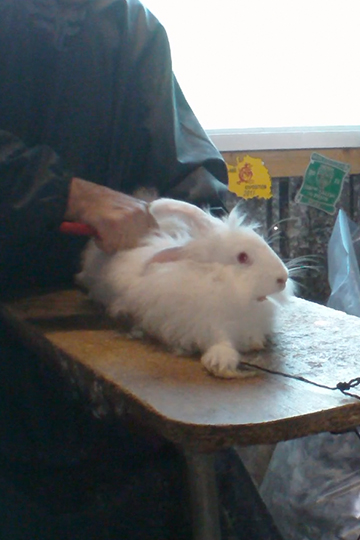
Angora
Angora rabbits, lives of suffering in the name of fashion
The softness of an angora jumper is deceptive. It conceals an indignity of exploitation and lives destroyed in the name of fashion. In 2013, PETA revealed the fate of Angora rabbits in Chinese farms. One Voice wanted to see what was happening in France. In 2016, 2018 and 2020, our investigations revealed a fate that is hardly any better. Locked up and isolated in tiny cages with random hygiene, these touching little creatures are condemned to a life of solitude spent dreading painful hair removal sessions.
Why are we fighting against the exploitation of Angora rabbits?
While the French breeding industry claims to respect animal welfare, our images show the brutality of these hair-removal sessions. Carried out three times a year, the sessions last on average between twenty and forty-five minutes per rabbit. While several methods can be used to harvest the hair, the most common is table-top hair removal. The rabbit is immobilised, with its body stretched out on a wooden table, tied by a front leg and a back leg.
Roughly handled, terrified, twisted in all directions, they scream in pain. Once depilated, rabbits can succumb to thermal shock. Our investigators have seen some of them struggling and even screaming for several seconds before the process even begins. It all happens in front of the cages of their fellow rabbits, who witness the ordeal.
Even more shocking, when observed on a breeding farm, is the removal of hair from the laps of young rabbits: upside down, trapped between the legs and held by the paws with one hand, while the other pulls out the hair…
The harsh fate of Angora rabbits
Hair production depends on the age of the rabbits and determines their longevity. They are generally considered usable up to the age of 6 or 7. Males, which produce less hair than females, are eliminated after sexing (a technique used to determine sex), carried out at birth or after a few months. Some are kept for breeding, and exchanged with those of other breeders to limit inbreeding. As for the females, they are exploited until they can no longer procreate. While ‘surplus’ males are sometimes eaten, most undesirable rabbits (those that are too old or sick) are killed off in the usual way, often by a stick to the back of the head. Younger rabbits, meanwhile, are ‘just’ thrown violently to the ground, according to our investigators. As for the remains, one of the farmers admitted to burning them rather than having them rendered.
French rabbit farms: lawless zones
It is estimated that 9,000 tonnes of rabbit hair are sold around the world every year, most of it to China. Following strong growth, the French sector has shrunk from 2,000 farms in the 1980s to around thirty today. Left to their own devices, these farms enjoy a high degree of tolerance when it comes to controls. As these farms are not intended for human consumption, their health is of little importance. However, our investigators found a number of breaches of the law. Ignoring cries of distress, violent killings, the treatment of corpses or, worse still, the “recycling” of sick rabbits for animal experimentation are all scandalous practices, made in France.
The true nature of rabbits
Social and playful, rabbits love to hide, nibble, explore, run, jump and have fun. In the wild, they live in groups of 5 to 7 individuals on average, forming colonies to watch over and defend their territory against predators. In the farms visited, One Voice’s investigators found living conditions that were more than basic. The rabbits are kept alone in small cages, apart from the mothers and their young. An empty space in which it is impossible for them to jump, as the ceiling is so low… Their life in these structures is reduced to sleeping, drinking and eating, when they are not starving for hair removal.
Key figures
An alarming fact
Our proposals
- Ban the breeding of Angora rabbits and the trade in their wool.
- We have already won the case for banning the trade in dog and cat fur in Europe. So it's possible!
History
